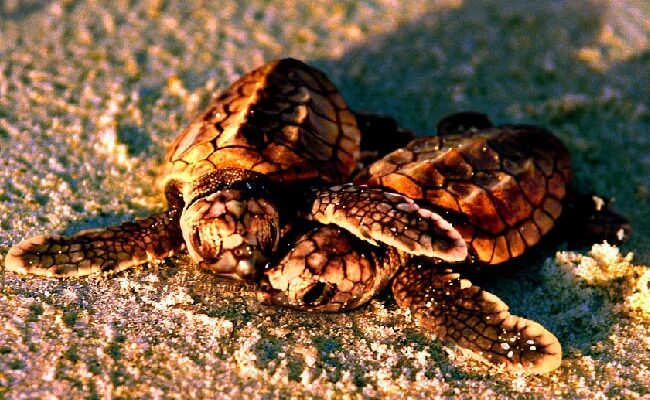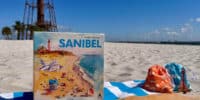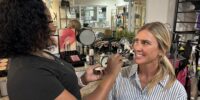The Endangered Species of Sanibel Island
Here in Florida, we have very unique wildlife. We have both freshwater and saltwater environments, allowing for many different species to thrive. On Sanibel Island, we are lucky enough to have a state protected wildlife sanctuary called J.N. Ding Darling National Wildlife Refuge. The refuge takes up over half of the island and is home to many different species. Some of the species within this mangrove habitat are on the brink of extinction.
We also are lucky enough to have a coastal side to our island, as well as a Bay side. Both allow for us to spot rare marine life on a daily basis. Many Sanibel Island visitors are unaware of just how magnificent a sighting of these endangered animals really is. Today, we are going to introduce you to a few of Sanibel’s protected species and what they are being protected from.
Loggerhead Sea Turtle
Although the Loggerhead Sea Turtle is not on the endangered species list in the U.S., it is on the international endangered species list. Experts are expecting the U.S. to follow suit in the near future. Sea turtles are primarily carnivorous animals and live for over 50 years on average. The Loggerhead Sea Turtle is the largest turtle species and can move up to 15 miles per hour. They lay and bury eggs on the beach every 2-4 years in May. They lay about 3-6 nests per season and each includes around 100 eggs. It is estimated that only 1 out of a 1000 hatchlings will actually make it to adulthood. Sea turtles are often poached for their meat and shell. They also get caught in fishermen’s nets. Over the years, their nesting grounds have been cut down by tourists and beach front development, making it harder for their population to grow.
Florida Manatee
On the Bay side of our island, we often see the endangered Florida Manatees. They are also referred to as “Sea Cows” and “Mermaids”. Manatees can be found swimming in slow moving rivers, canals, and bays. A lot of manatees have algae growth on their backs. They can live for over 60 years. They do not begin breeding until they are 5 years old and keep their calves with them for up to 2 years. While calves nurse from their mothers, adult manatees are primarily herbivores. They are mammals, so they must come to the surface for air every 3-5 minutes. Because manatees come to the surface so often, they are at risk to be hit by boats speeding along the water. A boat can fatally injure a manatee and many of the surviving manatees have white scars on their backs for this reason. Cold waters are another danger to manatees. In the winter months, manatees will congregate to warm springs, but the food is scarce. This causes the manatees to venture out into the cold waters and sometimes they do not make it back to the warmer water in time. Manatees have also lost some of their habitat due to human development and are often harassed by humans. Their numbers have gone up since being on the endangered species list and they may be removed from the list soon.
Smalltooth Sawfish
A less commonly known species in Sanibel Island is the Smalltooth Sawfish. These fish are found in shallow tropical waters and are named after their saw shaped nose. They can live up to 30 years on average. Their saw has thousands of sensory organs used to sense the motion of their prey. They mostly eat fish, but also eat crustaceans. Their population is low because they only breed every 2 years and each litter only contains less than 20 pups. This endangered animal is also threatened by restricted habitats and often gets tangled in miscellaneous fishing gear left behind in the water. Since being protected, their numbers are slowly rising.
American Crocodile
This rowdy reptile is the largest living reptile on the planet. Inhabiting saltwater wetlands, mangroves, and coves, they can live up to 70 years and are primarily carnivores. They are often confused for their cousin the American Alligator. The easiest way to tell them apart is by their shape, snout, and color. The Crocodile is more of a lizard shape and the Alligator has a much broader snout. The Crocodile also has lighter skin than the Alligator. Crocodiles build nests and lay up to 50 eggs around May. The eggs incubate in the nest for 3 months. Once the eggs hatch, the mother does not care for her hatchlings after the first few days. This causes some of the young to be picked off by bigger predators in the area. Crocodiles are threatened by loss of habitat. They are also poached for their hide and are often hit by speeding cars. Luckily for us, the population is rising for this species.
More often than not, we forget how our presence affects the other animals around us. Picking up after ourselves, and taking little steps to better our oceans, will help the animals that have to live in it to thrive. To find out how you can better our oceans, check out these 10 easy steps here. Taking the extra step to cut down the problems now will make for a better future.







